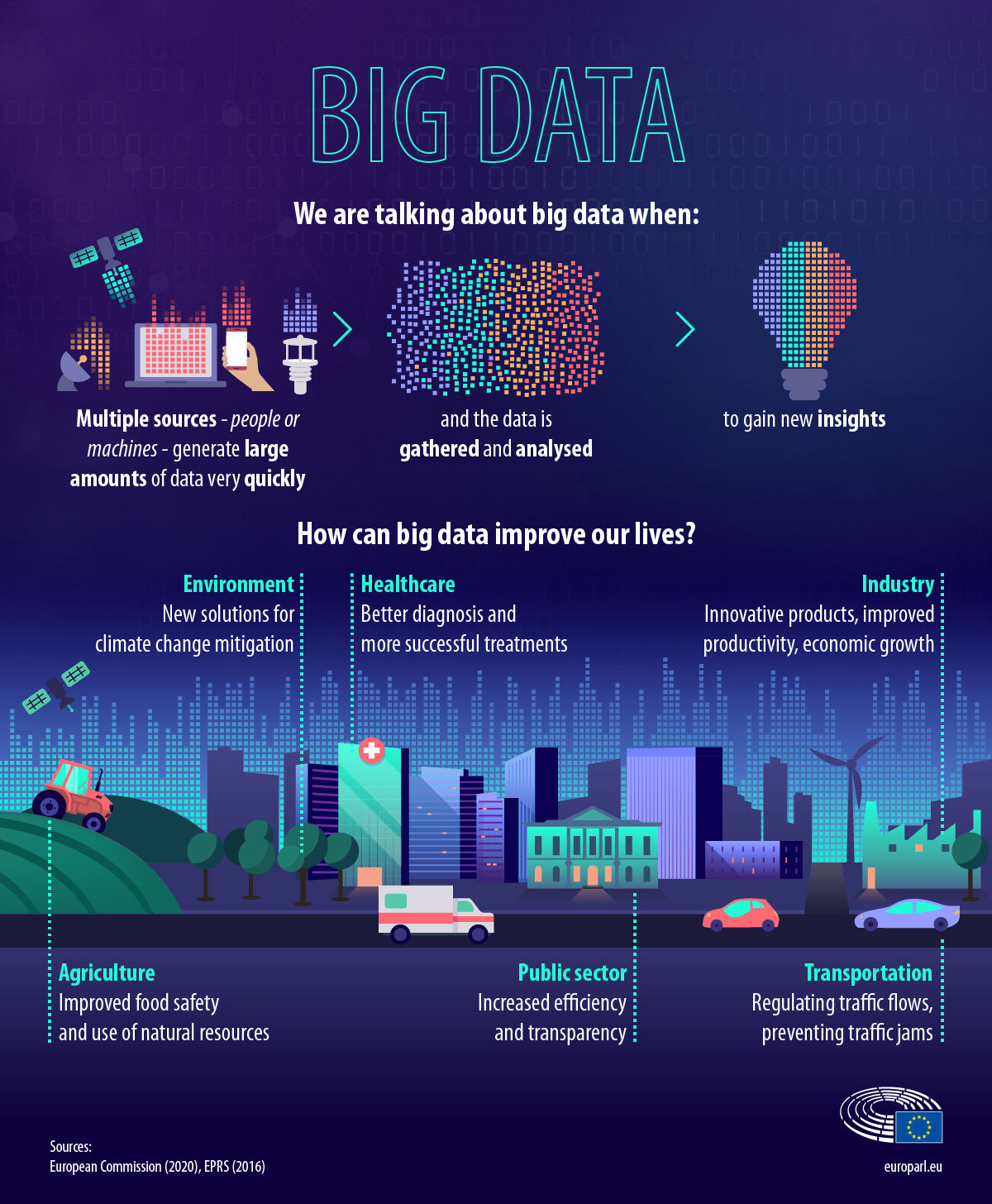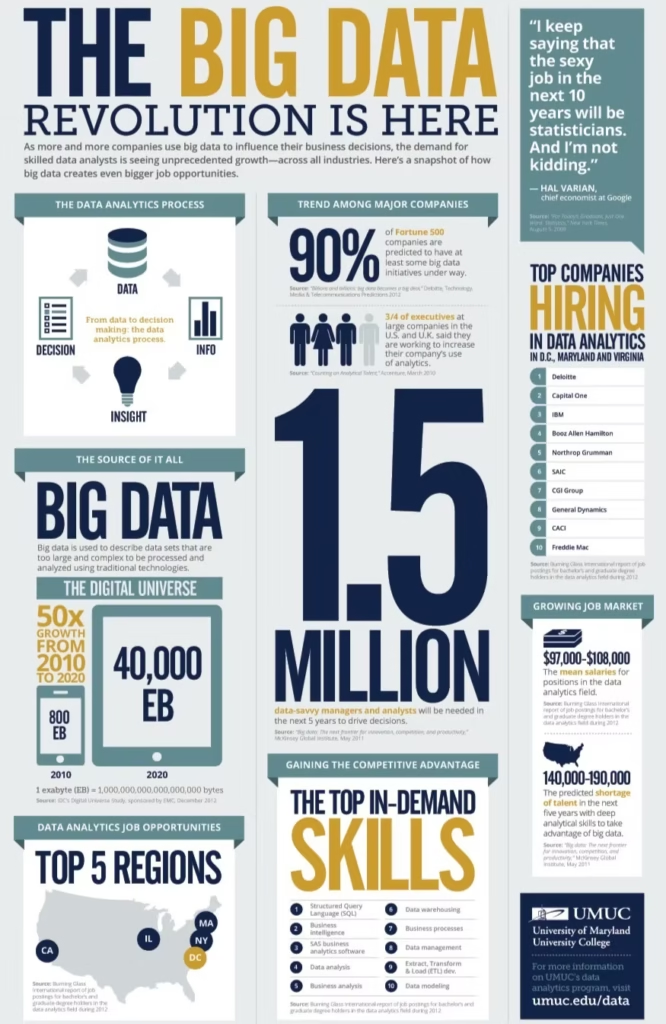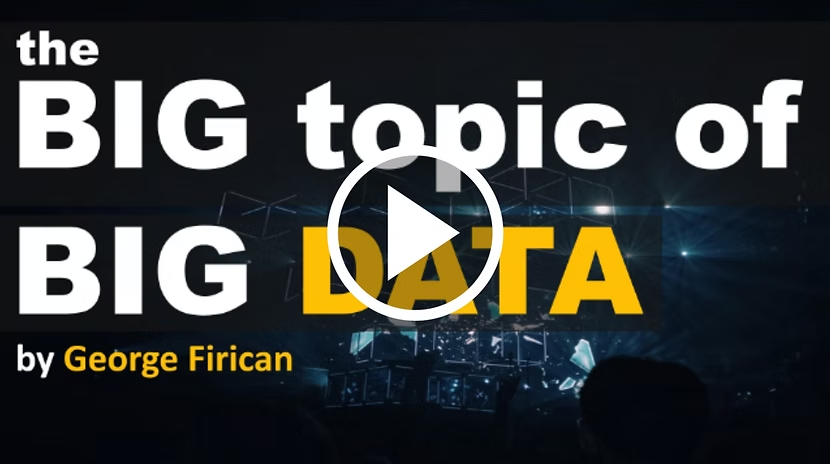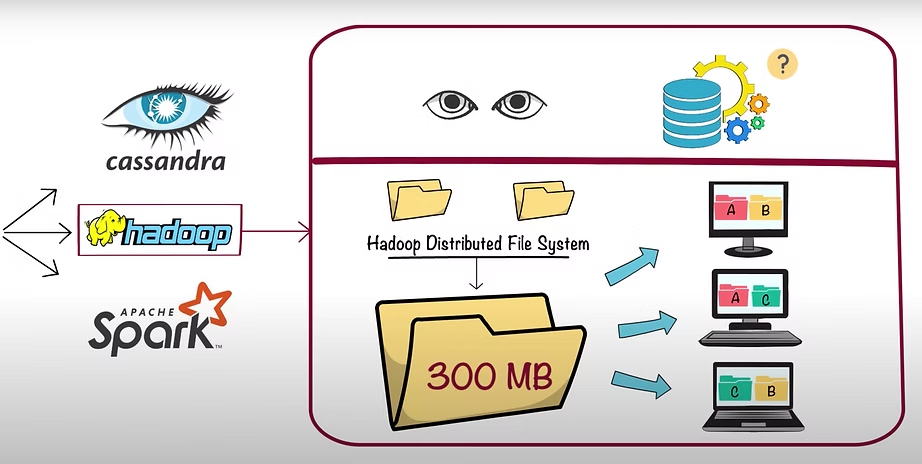Module 1: Introduction to Big Data
What is Big Data? What is it used for? Why is it used for?
What are the advantages and disadvantages of using Big Data?
1
Are you ready to embark on this exciting journey?
Introduction
- Have you ever wondered how Youtube recommends videos that intrigue you?
- It’s amazing to see that social network platforms like YouTube recommend just the right videos for you. Yes, Big Data is doing the job.
- In this module, you’ll start by learning the background information related to Big Data, such as Big Data definition, its history, characteristics, and values.
Objectives
- Understand what Big Data is (definition, types, and characteristics), who uses it, and how it’s used in the current world.
- Understand the history of Big Data as well as the Vs of Big Data.
- Identify the values and the challenges of Big Data.
- Learn about the practical applications of Big Data and how it could be best used.

2
What is Big Data?
Definition
Big Data is a term that refers to the gargantuan volume of data that cannot be processed without the use of technology. Big Data uses data processing to analyze and extract information from datasets to gain insights and advance forward.
Big data can be analyzed for insights that lead to better decisions and strategic moves.
Types of Big Data
The types of Big Data are: structured, unstructured, or semi-structured.
– Structured data refers to any data that can be stored in a fixed format.
– Unstructured data refers to any data with an unknown form. For instance, a data set that includes both images, texts, and videos could be one unstructured data source.
– Semi-structured data are those that are structured in form but are actually not defined with. XML files are typical example of this type of Big Data.
What are the characteristics of Big Data?
Because Big Data can provide the society with necessary benefits such as improving customer services, enhancing operational efficiency, and making better decisions, many are noticing the power of Big Data.
Big Data could be typically characterized by its many Vs- Volume, Veracity, Variety, etc. Just to talk about one of them the volume of data in big data analytics matters, as the size plays a very crucial role in determining the value of the data. And, in addition, it is conventionally considered that the bigger the data set, the better the analysis that is yielded from the analysis.
3
Lets Dive Deeper
If you are a reader…
Learn about the basics of Big Data further by exploring the series of articles below.
- Big Data: What it is and why it matters
- What is BIG DATA? Introduction, Types, Characteristics, Examples
- What Is Big Data? Introducing the best practices of Big Data, values, and challenges of Big Data
- Identifying the 17 V’s Of Big Data
- Data Never Sleeps
If you are a visual learner…
Learn about the basics of Big Data more by exploring the set of videos below.


Assignment
Upload a post on the forum.
Answer the following questions:
- Which V do you think is the most important? Why?
- What is the original definition of big data based on your understanding?
- What is one application of big data that you see in your life?
The Most Important V in Big Data – Article Guidelines for Module 1
- Recall the Vs mentioned in class. For example: Value, Volume, Variety, Velocity, and Veracity.
- The article should be 800-1200 words. It is better to write more than write less.
Procedure:
- Learn about the different Vs in Big Data and be convinced that one is more important than all the others.
-
Generate a list of proofs that verify your V to be most significant.
→ This way each one of your key point can have a paragraph that supports itself. -
Your structure of the article should be similar to this:
Paragraph 1
- Start with an interesting hook and catchy title.
- Introduce Big Data since not everyone may know its significance.
- Guide the reader into knowing the different Vs in Big Data. Make sure that you still mention other Vs so that the reader knows that you are trying to prove that one of them is the most important.
Paragraphs 2, 3, 4, …, etc.
- These are your body paragraphs where you should explain precisely the points you are proving.
- Start with introductory topic sentences.
- Followed by evidence and anaylsis that finish polishing the paragraphs.
Final Paragraph
- Conclude your paragraph by directly affirming that your chosen V is the most important.
- Write a few sentences that leave the reader reflecting at the very end of the article. Questions can be good to put in here.
4. Write your first draft!
→ Write everything you want to include, even if it might sound messy at first (remember that messiness is crucial in big data, and it actually leads to success!)
→ Please make sure that you have met the requirements of words.
→ Put pictures in your article to attract the readers’ attention.
- The pictures can just be for enhancing the article’s writing or can be used for further references in the texts of the article.
- Make sure to cite the pictures and put figure numbers below them.
- Revise your first draft by letting others write you compliments and suggestions.
- Publish your work!



